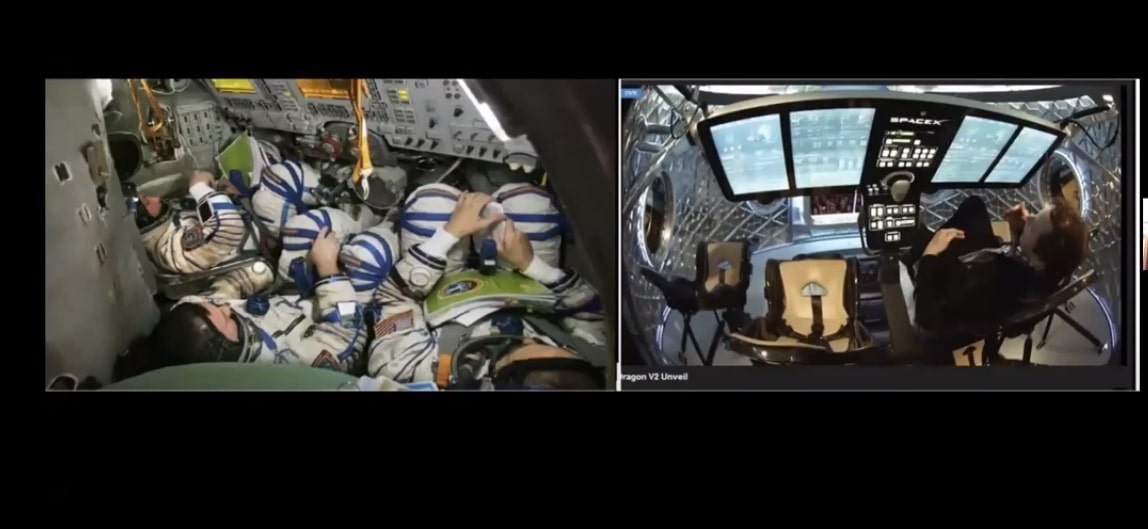The Launch of SpaceX Crew Dragon and the promising future of Aerospace Engineering

A webinar was conducted by UPES, hosted Mr. Roger Hunter, Project Manager for NASA’s Kepler Mission, who delved into the future of space exploration on the heels of the SpaceX crewed flight mission’s success
Space has been the final frontier for humankind. Since time immemorial, we have looked at the heavens in awe and wished to explore it. On April 12th 1961, a man was able to set into the cosmos and experience it at close quarters. Cosmonaut Yuri Gagarin was onboard Vostok 1 when he made history as the first human who went to space. What followed was an age of space exploration and humanity’s victory, albeit small, over the infinite universe.
Almost six decades later, we have taken another giant leap in human spaceflight missions. The recent successful launch of SpaceX Crew Dragon atop a SpaceX Falcon9 rocket to the International Space Station is nothing short of a revolution that opened endless possibilities. For starters, it is commercially built by a private company – SpaceX – unlike earlier missions. It is cheaper and lighter than the Orion (NASA’s spacecraft, which was planned to land humans on the moon by 2024), weighing only 9.5 tons compared to the latter’s 26.5 tons. SpaceX’s Falcon 9 rocket is also the world’s first reusable orbital-class rocket, driving down the cost of space explorations by a considerable margin. The Dragon features a revamped touch-based interface and is capable of navigating on its own on the entirety of its mission, making it completely autonomous (though manual controls are still present).
The Falcon9 has also brought a new dimension to space rides. NASA astronauts Bob Behnken and Doug Hurley, who were on board the Crew Dragon, were amazed by the smooth lift-off the shuttle had. Bob Behnken attributes the easy lift-off to the Falcon 9’s liquid-fueled rocket, which allowed the Dragon to get off the ground much more smoothly than the old space shuttle’s solid rocket boosters. The Dragon is expected to fly back home by the end of July, undertaking another significant endurance test. If everything works out well, NASA would be able to maintain a regular rotation of crewed flights to the ISS and back – something it has not done since the days of the space shuttle program.
Recently, a webinar was conducted by UPES, hosted Mr. Roger Hunter, Project Manager for NASA’s Kepler Mission, who delved into the future of space exploration on the heels of the SpaceX crewed flight mission’s success. He talked about the NASA Small Spacecraft Technology and Kepler Mission Program that focuses on the rapid development and demonstration of small spacecraft capabilities applicable to exploration, science, and commercial space sector. It is a crucial arm in executing cost-efficient missions and developing improved space crafts in lesser time. The achievement of the Dragon proves that even private players, with adequate assistance, can tremendously push the boundaries of space exploration and open up new frontiers.

The recent successful launch of SpaceX Crew Dragon atop a SpaceX Falcon9 rocket to the International Space Station is nothing short of a revolution that opened endless possibilities
Mr. Hunter also showed images of the cockpit and how they have improved over the years. Comparing the mechanical button-heavy Apollo 4 (1967) cockpit with that of Dragon’s touch screen, he elucidated the tremendous advancement in displaying crucial and critical data coupled with a newer, more intuitive control system. He also delved into the contributions of private players to future missions. Boeing’s Starliner, a capsule for crewed space flights to the ISS, is expected to begin its mission this year. Dream Chaser, built by another private player named Sierra Nevada Corporation, is a multi-mission space utility vehicle capable of transporting crew and cargo to the ISS and back, will begin its mission in 2021.
The question to be asked is: How will private enterprises accelerate the space journey and give birth to newer career prospects? To explain, consider this: since 2006, more than $18 billion has been spent on the development of the Orion and its space launch system while SpaceX, which received the contract in 2014, flew astronauts into orbit with just $3 billion! This means more launches can be held per year with lesser cost and time involved, substantially increasing our research rate. Another benefit of the Dragon was found inside the cockpit: the legroom! Modern design aesthetics made it possible to not only decrease the overall weight of the capsule but also increase the space inside, providing a more comfortable trip for astronauts. It leaves no doubt that the design expertise of Tesla played a crucial role here. Lastly, private players’ involvement means a massive opportunity for large scale employment in various sectors, predominantly technology, aerospace engineering, avionics engineering, and R&D.
The Department of Aerospace Engineering, under the School of Engineering at UPES, offers specialized courses for undergraduate and postgraduate students and a doctoral program. The department benefits from the prowess of other schools, with a culture of knowledge sharing among peers to improve beyond the curriculum. The curriculum covers a gamut of topics ranging from design analysis to the intricacies of manufacturing a space launch vehicle. Furthermore, it also offers a Design Thinking Module by IBM.
With the Indian government’s recent announcement of opening up the space sector for private players, there could not be a better time to pursue a career in Aerospace engineering. Who knows we may start booking tickets for a space ride within a decade? Be prepared to reach for the moon and beyond with UPES!
You can access the complete webinar on NASA Small Spacecraft Technology and Kepler Mission programs at https://www.youtube.com/watch?v=MmGYmFILpEg



